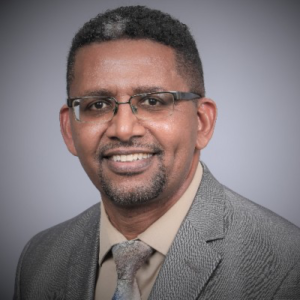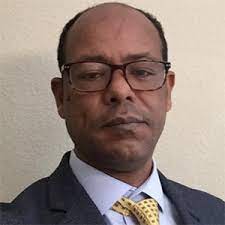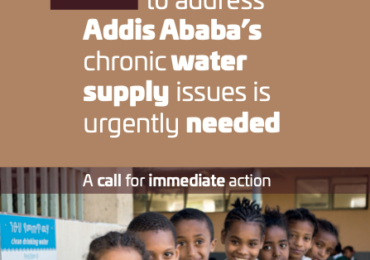This summer, record Nile River flow and flood resulted in devastating loss of life, human suffering, and property damage. East Africa was hit especially hard. These floods were primarily driven by a La Niña weather effect that has impacted the entire world: Northern America is witnessing one of the most active tropical seasons on record; and flooding and locust impact in Eastern Africa are the worst in recent history. This is on top of the COVID-19 pandemic that has impacted the global population.
With around 70% annual water flow volume occurring in the months of July through September (83 % in four months) and 17% of variability year over year, it is clear that the Blue Nile (Abbay) requires damming to save lives along the course of the river while providing hydropower for Ethiopia. The Grand Ethiopian Renaissance Dam (GERD), in addition to generating electricity, provides protection against too much or too little water of the Blue Nile which may be more of the norm than the exception as the climate continues to change. One doesn’t have to be a hydrologist to figure out the significant role that the GERD played this summer and one should consider the more significant role that it could have played, if the dam’s central block was raised slightly above the current level, resulting in reduced flooding downstream.
It is for this reason and with additional support of scientifically confirmed facts that encourage the filling and operations of the dam and that the three countries need in order to re-engage and conclude the stalled negotiations between Egypt, Ethiopia, and the Sudan. One way to break this stalemate is to use what is referred to as a Progressive Agreement.
A Progressive Agreement is consistent with the dynamic nature of a trans boundary watercourse (water use and hydrology) and helps build confidence through demonstrable results each step of the way. It is also rooted in best practices in water resource management. The implementation of an adaptive water resource management principle in tripartite negotiations allows one for making “steps based” decisions consisting of initial agreement, monitoring and collection of key data and information, actively engaging stakeholders, and then making sequential decisions based on lessons learned and also acts as a confidence builder for key stakeholders. It is a structured decision-making approach and not a “trial-and-error” process. This framework allows one to account for uncertainties, afford an opportunity for trust building based on earlier decisions, and implement science-based solutions, taking out the status quo hegemonic infrastructure building decision-making process within the Nile Basin.
In its 2nd Communiqué of the 2nd Extraordinary African Union (AU) Bureau of the Assembly of Heads of State and Government on the Grand Ethiopian Renaissance Dam (GERD), the meeting of the Bureau of the Assembly of AU Heads of State and Government agreed on the text of an agreement on the filling and operations of the GERD, which should include a comprehensive agreement on future developments on the Blue Nile River. The stakeholders debated these three issues 1) the filling, 2) the operations and drought management and 3) and then Blue Nile development upstream of the GERD operating under different hydrologic, water management, socio-economic and climate regimes. For instance, the filling is an immediate issue and depends on short term hydrology (3 to 5 years) and should proceed without delay, however the operations, comprehensive development upstream of the GERD, and the equitable drought sharing requires consideration of factors that are dependent on hydrology and water use in the long run. The need to modify several decades old agreements on other transboundary rivers (e.g., the Colorado and Columbia Rivers) highlight why a Progressive Agreement is needed in the Nile Basin at the onset.
Splitting the negotiations into digestible pieces including the immediate phase of the filling, followed by an agreement on the operations and comprehensive development upstream of the GERD appears to us the best avenue to take. Agreeing only on the filling of the GERD as a first phase of a Progressive Agreement would allow for the circumvention of the sticking points between the countries that stalled the current negotiations: implied 1959 water resources agreement between Egypt and the Sudan, which allocated all of the Nile flow between the two countries and didn’t foresee the need for the equitable shares with other riparian states. The 1959 allocation is embedded within the release amount that Egypt is insisting to be binding as part of the current negotiations. The need for a binding agreement and an equitable water resource allocation in the Nile Basin cannot be separated. This, in turn, calls for the need to involve other riparian states. Putting a binding agreement for water release without implying water allocation makes it difficult for the parties to agree. If a certain release is made to be “binding”, by definition, it is the water allocation that must be honored at all time, which is outside of the scope of GERD negotiations.
Only equitable shares should be binding.Separating current negotiation into a distinct filling agreement followed by operations and equitable sharing for Nile Basin countries has wide international community support including the European Union, which advised the three parties this summer by stating that, “The filling period of the dam must and can be addressed to everyone’s satisfaction. The operations after the filling need further discussions to reach a water sharing arrangement, as occurs in all river basins”.
Immediate negotiations and agreements on only the filling stage is a litmus test for the future comprehensive agreement on the operations and development of projects upstream from the GERD. It may also trigger broader economic cooperation and sustainable development within the Nile Basin. Perceived risks of operation that are not backed by science will also diminish. The Tekeze hydropower dam is a stellar demonstration of collaboration between Ethiopia and the Sudan even in the absence of prior framework agreement. When a 300 MW hydropower dam over Tekeze River was launched in February 2009, there was fear from the Sudanese side that the Ethiopian dam would undermine water users downstream. The current state of Ethiopia and the Sudan pertaining to the Tekeze dam is that the Sudanese enjoy a steady flow throughout the year. The absence of prior operational agreement didn’t inhibit collaboration based on good faith, ethics, and fraternity.
It is our professional opinion that the GERD as a hydropower outlet dam, by definition, will release water to downstream countries. Downstream impact, if any, is restricted to the filling cycle. Even if Ethiopia builds more upstream dams, maximizing hydropower production at the GERD (an outlet dam) should allow more water to be stored and released downstream, increasing the water storage capacity of the Nile Basin and flood protection.
The current exceptional hydrologic conditions that resulted in significant water storage within the Nile Basin (Aswan High Dam, Lake Victoria and high groundwater levels throughout) have provided a unique opportunity for all stakeholders and it is waiting to be grabbed. A recent, widely circulated study indicates that the GERD filling under this type of hydrologic condition does not have significant impact on downstream countries. In addition, climate projection indicates that this excellent hydrologic condition will continue next year. This should encourage all parties to agree on the filling process as a first step without significant impact to downstream countries.
Go for a filling agreement first. Then negotiate on long-term cooperative operation, comprehensive Nile water allocation, and basin wide water shortage mitigation/drought sharing strategies that involve all basin countries. This will result in a win-win situation for all stakeholders.

Dr. Tirusew Asefa
Dr. Tirusew Asefa is a registered professional engineer with the State of Florida, a Diplomate of the American Academy of Water Resources Engineers, and a Fellow of the American Society of Civil Engineers. He currently chairs Florida Water and Climate Alliance. He can be reached at mululove[at]yahoo.com

Dr. Semu Moges
Dr. Semu Moges is consultant and Adjunct Prof. at University of Connecticut. Prior to this, he held positions as dean of school of graduate studies of water programs at Arbaminch University and later as an associate professor of water resources engineering at Addis Ababa University, Ethiopia. Dr Moges is an expert in water and climate of the Nile Basin. He facilitated sustainable development goal (SDG) mainstreaming projects in Africa and taught course in Pan African University. Dr. Moges has published several articles in different areas of water resources management.



